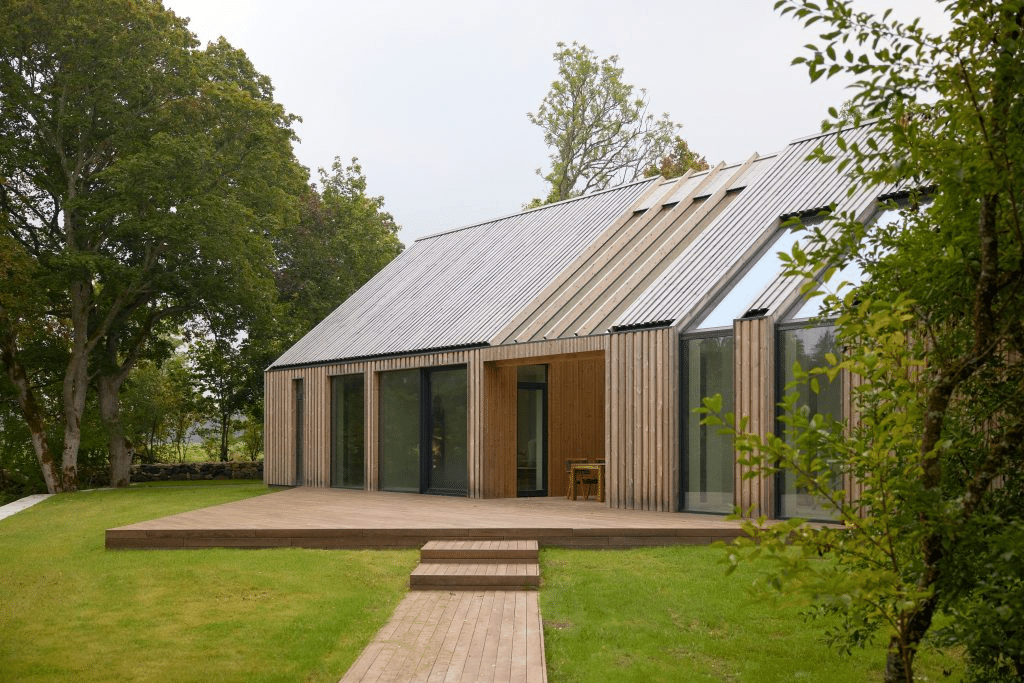As sustainable construction becomes the new benchmark in architectural design, the demand for natural yet high-performing materials is stronger than ever. Among these innovations, Thermopine has emerged as a reliable and environmentally responsible timber solution. Engineered through thermal modification, it offers the durability of hardwoods while maintaining the sustainability profile of softwood. This balance of performance and ecological integrity positions Thermopine as a material of choice for modern architects and developers.
What Is Thermopine?
Thermopine is a thermally modified version of Nordic pine, created by subjecting the timber to controlled heat treatment in an oxygen-free environment. This process alters the chemical structure of the cell walls, reducing the wood’s capacity to absorb moisture and increasing its stability. The result is a product that is dimensionally stable, durable, and resistant to decay — without the use of any synthetic chemicals or preservatives. The treatment process typically involves heating the wood to 200°C under steam, which enhances its density and provides a rich, consistent colour tone ideal for architectural cladding and joinery applications.
Performance Benefits
Thermopine’s physical performance is comparable to that of tropical hardwoods. Its resistance to moisture ensures reduced swelling and shrinkage, making it particularly suitable for the UK’s variable climate. With a typical lifespan of over 30 years when installed correctly, it offers outstanding value over time. Additionally, the heat treatment process improves insulation properties, contributing to energy efficiency in building envelopes.
Architects and specifiers seeking sustainable yet resilient cladding options are increasingly turning to Thermopine as part of low-carbon design strategies. It bridges the gap between performance, aesthetics, and environmental responsibility. Thermally modified wood cladding.
Environmental Impact
The sustainability credentials of Thermopine extend beyond its production method. The raw material is sourced from FSC- or PEFC-certified Nordic forests, ensuring traceability and responsible forestry practices. The thermal modification process uses only heat and steam, eliminating the need for chemical preservatives or toxic by-products. Its lower embodied carbon compared to aluminium or composite cladding aligns with the UK’s net-zero targets. Furthermore, Thermopine is fully recyclable at the end of its service life, supporting circular-economy principles.
Applications in Modern Construction
Thermopine cladding is used across a wide range of projects — from private homes to public-sector developments. Its stability allows for precise installation in shadow-gap or rainscreen systems, maintaining crisp lines and minimal movement even in exposed conditions. The natural golden-brown hue achieved during heat treatment can be left to weather into a silvery patina or finished with UV-protective coatings to retain its tone. Designers appreciate the versatility it offers across façades, soffits, and interior accent walls.
Comparison and Market Advantage
When compared to untreated softwoods, Thermopine’s improved durability dramatically reduces maintenance requirements. Unlike tropical hardwoods, it is sourced from sustainably managed European forests, avoiding the environmental impact of long-distance shipping. It also rivals composite cladding systems in dimensional stability while offering a completely natural aesthetic that appeals to environmentally conscious clients.
Conclusion
Thermopine embodies the next generation of sustainable building materials — a product that performs well, lasts decades, and supports a greener built environment. Its versatility and proven performance make it ideal for architects focused on delivering design integrity alongside ecological responsibility. For detailed specifications and supply options, visit Timber Cladding Specialists to explore Thermopine.
